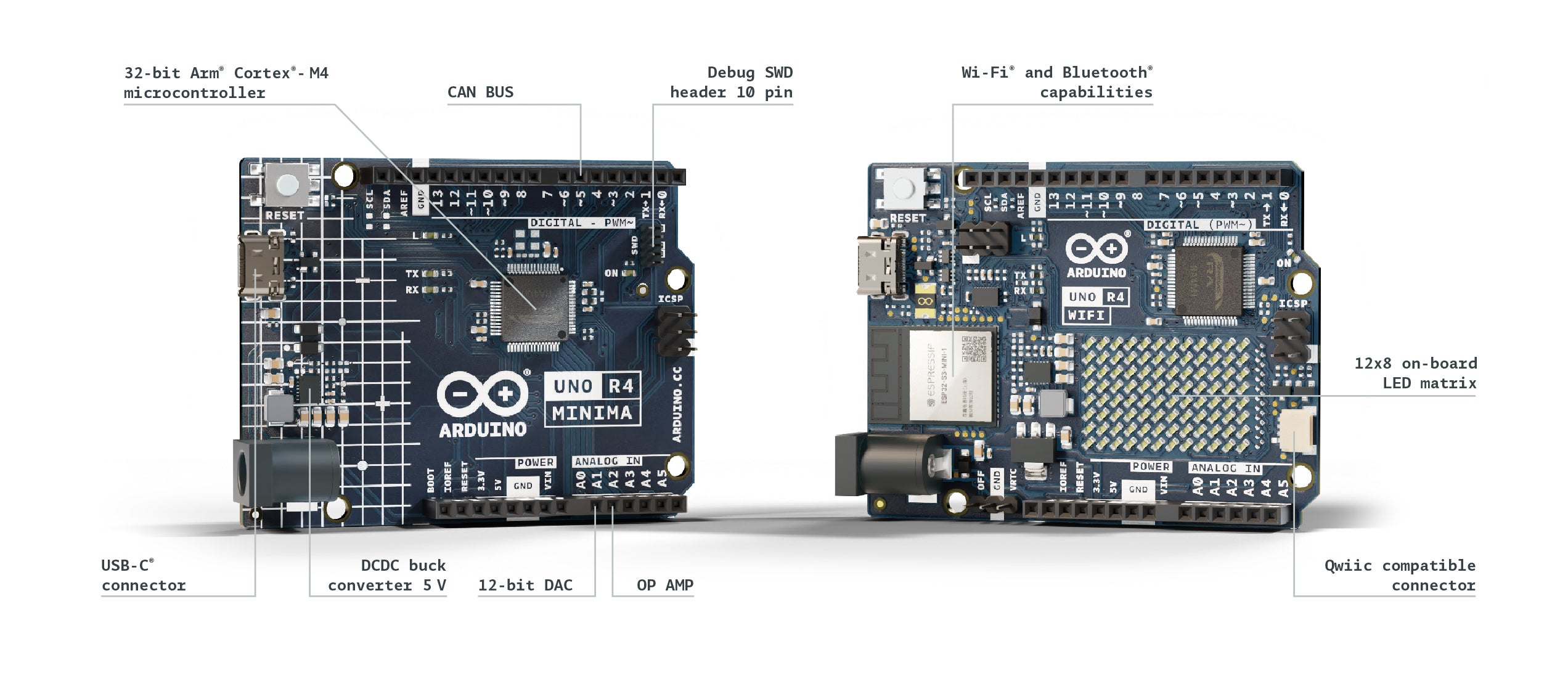Arduino announces Uno R4
- By electron
Arduino just announced their 32-bit Uno R4:
There are 2 different models:

WiFi model
Minima model
UNO R4 preserves the standard form factor, shield compatibility, 5 V power supply and robustness of the UNO range while offering no less than a 32-bit Arm® Cortex®-M4 and a 16-fold increase in memory. Thanks to enhanced thermal design, the UNO R4 boards can be powered up to 24 V.
There are 2 different models:
- Arduino UNO R4 WiFi ($27.50 USD): The Arduino UNO R4 WiFi merges the RA4M1 microprocessor from Renesas with the ESP32-S3 from Espressif, creating an all-in-one tool for makers with enhanced processing power and a diverse array of new peripherals. With its built-in Wi-Fi® and Bluetooth® capabilities, the UNO R4 WiFi enables makers to venture into boundless creative possibilities. Furthermore, this versatile board boasts a convenient on-board 12x8 LED matrix and a Qwiic connector, offering ample space for innovation and unleashing creativity. This dynamic combination empowers makers to transform their ideas into reality and elevate their projects to unprecedented heights.
- Arduino UNO R4 Minima ($20 USD): Introducing the Arduino UNO R4 Minima! This board boasts the RA4M1 microprocessor from Renesas, delivering increased processing power, expanded memory, and additional peripherals. And the best part? It stays true to the reliable UNO form factor and operates at a practical 5 V voltage. Brace yourself for an upgrade like no other with the Arduino UNO R4 Minima!

WiFi model
| RA4M1 | 256 kB Flash, 32 kB RAM |
| ESP32-S3 | 384 kB ROM, 512 kB SRAM |
Minima model
| Memory | RA4M1 | 256 kB Flash, 32 kB RAM |
Last edited:

![Z-Wave-Source-Code-Stack-Graphic[1].png](/data/attachments/8/8149-a5a9fef878a1e0138c75656d07730a7d.jpg)